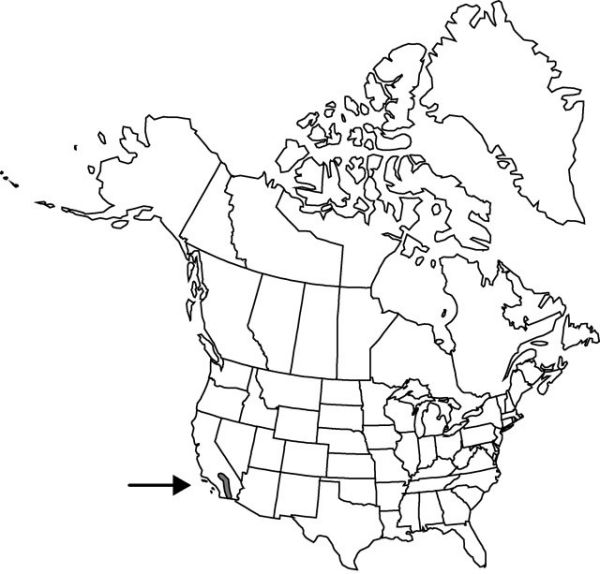Allium parryi
Proc. Amer. Acad. Arts 14: 231. 1879.
Bulbs 1–3, not clustered on stout, primary rhizome, ovoid to globose, 0.8–1.4 × 0.8–1.5 cm; outer coats enclosing 1 or more bulbs, brown to reddish brown, chartaceous, lacking cellular reticulation or cells arranged in only 2–3 rows distal to roots, ± quadrate, without fibers; inner coats light brown, cells obscure, quadrate. Leaves persistent, withering from tip by anthesis, 1, basally sheathing, sheath not extending much above soil surface; blade solid, terete, 12–28 cm × 1–3 mm. Scape persistent, solitary, erect, solid, terete, 5–25 cm × 1–3 mm. Umbel persistent, erect, loose, 8–50-flowered, hemispheric, bulbels unknown; spathe bracts persistent, 2–3, 4–6-veined, ovate, ± equal, apex setaceous. Flowers campanulate, 6–9 mm; tepals erect, white to pink, becoming deep pink to red after anthesis, lanceolate to lance-ovate, ± equal, becoming ± rigid in fruit, margins entire, apex acute to acuminate, flaring distally; stamens included; anthers yellow; pollen yellow; ovary crested; processes 6, prominent, ± triangular, margins ± irregularly toothed, apex emarginate; style linear, equaling stamens or shorter; stigma capitate, 3-lobed, lobes slender, recurved; pedicel 6–20 mm, flexuous in fruit. Seed coat shining; cells minutely roughened. 2n = 14.
Phenology: Flowering May–Jul.
Habitat: Clay or sandy soils on dry slopes
Elevation: 900–2200 m
Distribution

Calif., Mexico (Baja California).
Discussion
Selected References
None.